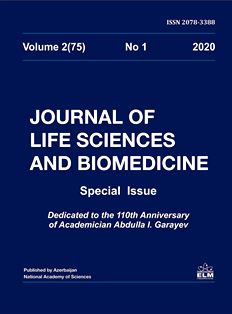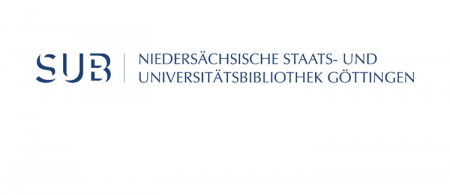
Mutation cases in the paternity tests using 15 autosomal STR markers
Research article: Mutation cases in the paternity tests using 15 autosomal STR markers
Authors: N.Sh.Mustafayev1,2,*, E.R. Mammadov2 , A.Ch. Mammadov1,2 , A.B. Hasanov2 , I.M. Huseynova1
1Institute of Molecular Biology & Biotechnologies, Azerbaijan National Academy of Sciences, 11 Izzat Nabiyev, Baku AZ 1073, Azerbaijan
2Biology Department, Scientific-Practical and Educational Unit of Forensic Medical Expertize and Pathological Anatomy, Ministry of Health of the Azerbaijan Republic; 1M.Mirgasimov, Baku AZ1022, Azerbaijan;
*For correspondence: mustafayevn02@yahoo.co.uk Accepted for publication: 15 October 2019
Abstract:
As well known, the mutations of the STR loci revealed in resolving the identification, disputed paternity/mothernity, kinship, etc. cases reduce to some extent the reliability of the results and deliver a certain difficulty in preparation of an accurate expert opinion. Therefore, information on the facts of detection of such allelic variations has great practical importance. In this study among 250 family cases of disputed paternity we found mutated alleles in two cases on FGA, in two cases on D19S433, in one case on D13S317 and in one case on D5S818 locus. In five cases more likely these mutations affected the paternal alleles, in one case the maternal allele. For each case possible mutation formation ways scheme was proposed. Moreover, in one case three-allelic profile on D21S11 locus has been observed indicating three copies of chromosome 21, which supported existing Down’s syndrome phenotype.
Keywords: STR marker, crossingover, insertion, deletion, null-allele, stepwise mutation, gene conversion, strand-slippage replication, paternity testing, maternal meiosis
References
Ali M.E., Alam S., Ferdous A. et al. (2009) Mutation in the FGA locus of father causing allele mismatch in the child in a DNA paternity test. Dhaka Univ. J. Biol. Sci., 18(2): 91-98.
AmpFlSTR®Identifiler®Direct PCR Amplifi-cation Kit (2015) User Guide. Thermo Fisher Scientific Inc., 126 p.; Chapter 5: Experiments and Results, pp. 66-72; Population data, pp. 86-93.
Annual Report Summary For Testing In 2001, 2002, 2003 (2001, 2002, 2003) Prepared by the Parentage Testing Program Unit, 2001: 12 p.; 2002: 51 p.; 2003, 53 p.
Annual Report Summary For Testing In 2004, 2006 (2004, 2006) Prepared by the Relationship Testing Program Unit and Accreditation Program Units, 2004: 62 p.; 2006, 102 p;
Annual Report Summary For Testing In 2008, 2010, 2013 (2008, 2010, 2013) Prepared by the Relationship Testing Program Unit, 2008: 64 p; 2010: 9 p; 2013; 4 p.
Aşıcıoğlu F., Oguz-Savran F., Ozbek U. (2004) Mutation rate at commonly used forensic STR loci: Paternity testing experience. Disease Markers, 20: 313-315.
Balloch K.J.D., Marshall J., Clugston J., Gow J.W. (2008) Reporting paternity testing results when 2 exclusions are encountered. Forensic Science International: Genetics Supplement Series, 1: 492-493
Botstein D., White R.L., Skolnick M., Davis R.W. (1980) Construction of a genetic linkage map in man using restriction fragment length poly-morphisms. Am. J. Hum. Genet., 32(3): 314-331.
Boutrand L., Egyed B., Füredi S., Mommers N., Mertens G., Vandenberghe A. (2001) Variations in primer sequences are the origin of allele drop-out at loci D13S317 and CD4. Int. J. Legal Med., 114(4-5): 295-297.
Brenner C.H. (2009) Mutations in Paternity: http//www.dna-view.com/ mudisc.htm.
Brinkmann B., Klintschar M., Neuhuber F., Hoehne J., Burkhard R. (1998) Mutation rate in human microsatellites: Influence of the structure and length of the tandem repeat. Am. J. Hum. Genet., 62:1408-1415.
Burkhard R., Nicole B., Peter W. (2011) Insertion-/deletion polymorphisms close to the repeat region of STR loci can cause discordant genotypes with different STR kits. Forensic. Sci. Int. Genet., 5(4): 339-341.
Butler J.M. (2006) Genetics and genomics of core Short Tandem Repeat loci used in human identity testing. J. Forensic Sci., 51(No 2): 253-265.
Cabezas S.R., Ribeiro T., Lucas I. et al. (2016) Analysis of 17 STR data on 5362 southern Portuguese individuals-an update on reference database. Forensic Sci. Int. Genet., 21: e10-12.
Canturk K.M., Emre R., Müslümanoğlu Ö. et al. (2015) Two repeat decrease at FGA locus in a paternity test: A case of mutation. J. of Forensic Medicine, 29(1): 56-59.
Dauber E.M., Bärb W., Klintschar M. et al. (2004) New sequence data of allelic variants at the STR loci ACTBP2 (SE33), D21S11, FGA, vWA, CSF1PO, D2S1338, D16S539, D18S51 and D19S433 in Caucasoids. International Congress Series, 1261: 191-193.
Deucher A., Chiang T., Schrijver I. (2010) Consultations in Molecular Diagnostics: Rare sequence variation in the genome flanking a short tandem repeat locus can lead to a question of “nonmaternity”. Journal of Molecular Diagnostics, 12(3): 385-389.
Dinesh K.J., Jiwan P.R., Bhinu S.T., Basanta R.P. (2013) Mutations or exclusion: an uncom-mon parentage assessment case. Scientific World, 11(11): 74-76.
Dogan S., Asic A., Muhovic I. et al. (2014) Overview of the genetic STR clustering among worldwide human populations. Int. J. Hum. Genet., 14(3,4): 131-142.
Dupuy B.M., Olaisen B. (1997) Sequenced alleles as internal standard in STR fragment analysis. Proceedings from the First European Symposium on Human İdentification, pp. 71-80.
Edwards M., Allen R.W. (2004a) Characteristics of mutations at the D5S818 locus studied with a tightly linked marker. Transfusion., 44(No 1): 83-90.
Edwards M., Allen R.W. (2004b) Characteristics of D5S818 mutations revealed through study of a flanking marker. International Congress Series, 1261: 33-35.
Ellegren H. (2004) Microsatellites: simple sequ-ences with complex evolution. Nature Rev. Ge-net., 5(6): 435-445.
Eunus A., Shafiul A., Ahmad F., Mahamud H., Tania H., Sharif A. (2009) Mutation in pa-ternally transmitted alleles at FGA microsatellite locus: A case of allele mismatch in child. Indian Journal of Forensic Medicine and Toxico-logy, 3(3): 41-43.
Fan H., Chu J.-Y. (2007) A brief review of Short Tandem Repeat mutation. Genomics, Proteo-mics. Bioinformatics, 5(1): 7-14.
Geada H., Viriato L., Vieira-Silva C., Cruz C., Lucas I., Ribeiro T., Espinheira R. (2003) STR mutations in paternity investigations: a study of 1-year consecutive cases. International Congress Series, 1239: 657-660.
Genetic diversity analysis with molecular mar-ker dаta: Learning module. Measures of ge-netic Diversity (2003) IPGRI and Cornell University, 71 p.
Gusmao L., Butler J.M., Carracedo A. et al. (2006) DNA commission of the international society of forensic genetics (ISFG): An update of the recommendations on the use of Y-STRS in forensic analysis. Forensic Sci. Int., 157(2-3): 187-197.
Hammond H.A., Jin L., Zhong Y., Caskey C.T., Chakraborty R. (1994) Evaluation of 13 short tandem repeat loci for use in personal identificati-on applications. Am. J. Hum. Genet., 55: 175-189.
Han G-R., Song E-S., Hwang J-J. (2001) Non-amplification of an allele of the D8S1179 locus due to a point mutation. Int. J. Legal Med., 115: 45-47.
http://www.cstl.nist.gov/strbase/mutation.htm
Huel R.L.M., Bašić L., Madacki-Todorović K. et al. (2007) Variant alleles, triallelic patterns, and point mutations observed in nuclear short tandem repeat typing of populations in Bosnia and Serbia. Croat Med. J., 48: 494-502.
Immela U.-D., Kleibera M., Neerman-Arbezb M., Klintschara M. (2004) An isolated exclusi-on in the FGA system. International Congress Series, 1261: 148-150.
Jobling M.A. (2004) The diversity of the human genome. In Human Evolutionary Genetics: Origins, Peoples & Disease (eds. Jobling, M.A., et al.). USA: New York, Garland Science, pp. 67.
Leibelt C., Budowle B., Collins P. et al. (2003) Identification of a D8S1179 primer binding site mutation and the validation of a primer designed to recover null alleles. Forensic Science International, 133: 220-227.
Li F., Xuan J., Xing J., Ding M., Wang B., Pang H. (2014) Identification of new primer binding site mutations at TH01 and D13S317 loci and determination of their corresponding STR alleles by allele-specific PCR. Forensic Sci. Int. Genet., 8(1): 143-146.
Liu Y.X., Zhang W.Q., Jia Y.S. et al. (2015) Multistep microsatellite mutation in a case of non-exclusion parentage. Forensic Science International: Genetics, 16: 205-207.
Mustafayev N.Sh. Mammadov A.Ch., Mamma-dov E.R., Hasanov A.B., Huseynova I.M. (2016) Study of the Azerbaijan population by the STR markers: I. Definition of basic population-genetic parameters of the STR markers. Proc. of ANAS (biol. and med. sci.), 71(2): 5-16.
Mustafayev N.Sh., Mammadov A.Ch., Mammadov E.R., Huseynova F.R., Hasanov A.B., Huseynova I.M. (2017a) Study of the Azerbaijan population by the STR Markers: II. Interpopulation analysis on the basis of STR markers’ allele structure. Proc. of Azerbaijan NAS, (biol. and med. sci.), 72(2): 5-20.
Mustafayev N.Sh., Mammadov E.R., Huseyno-va F.R., Mammadov A.Ch., Hasanov A.B., Huseynova I.M. (2017b) Population-genetic and comparative interpopulation studies of Azerbai-jan population based on the 15 autosomal STR markers. Transactions of the Institute of Mol. Bi-ol. & Biotechnol., 1: 72-79.
Narkuti V., Vellanki R.N., Gandhi K.P. et al. (2007) Microsatellite mutation in the mater-nally/paternally transmitted D18S51 locus: two cases of allele mismatch in the child. Clin. Chim. Acta., 381(2): 171-175.
Narkuti V., Vellanki R.N., Anubrolu N. et al. (2008) Single and double incompatibility at vWA and D8S1179/D21S11 loci between mother and child: Implications in kinship analysis. Clinica Chimica Acta, 395: 162-165.
Natsuko M., Tetsushi K., Koji F. et al. (2008) A D19S433 primer binding site mutation and the frequency in Japanese of the silent allele it causes. J. of Foresic Sci., 53(5): 1068-1073.
Nutini A.L., Mariottini A., Giunti L., Torricelli F., Ricci U. (2003) Double incompatibility at human alpha fibrinogen and Penta E loci in paternity testing. Croat. Med. J., 44: 342-346.
Opolska-Bogusz B., Kaczmarczyk G., Piniews-ka D. et al. (2006) Allelic variant 6' at locus D13S317 in a paternity casework; a semi-auto-matic genotyping problem. Arch. Med. Sadowej Kryminol., 2006, 56(2): 115-118.
Patterson D. (2009) Molecular genetic analysis of Down syndrome. Human Genetics, 126(1): 195-214.
Prinz M., Carracedo A., Mayr W.R. et al. (2007) DNA Commission of the International Society for Forensic Genetics (ISFG): Recommendations regarding the role of forensic genetics for disaster victim identification (DVI). Forensic Science International: Genetics, 1: 3–12.
Ricci U., Cerri N., Sani I. et al. (2003) De novo mutations at D3S1358, D8S1179 and D18S51 loci emerged during paternity testing: confirmation of biological paternal lineage by using a panel of Y-chromosome STRs. Progress in Forensic Genetics 9. Int. Congr. Ser., 1239: 643-646.
Ricci U., Melean G., Robino C., Genuardi M. (2007) A single mutation in the FGA locus res-ponsible for false homozygosities and discrepan-cies between commercial kits in an unusual pa-ternity test case. J. Forensic Sci., 52(2): 393-396.
Schneider P.M. (2007) Scientific standards for studies in forensic genetics. Forensic Sci. Int., 165(2-3): 238-243.
Schneider P.M. (2012) Beyond STRs: The role of diallelic markers in forensic genetics. Transfus. Med. Hemother., 39: 176-180.
Singh Negi D., Alam M., Bhavani S.A., Nagaraju J. (2006) Multistep microsatellite mutation in the maternally transmitted locus D13S317: a case of maternal allele mismatch in the child. Int. J. Legal Med., 120(5): 286-292.
Sprecher C.J., Puers C., Lins A.M., Schumm J.W. (1996) General approach to analysis of polymorphic short tandem repeat loci. BioTech-niques, 20: 266-276.
Turchi C., Pesaresi M., Alessandrini F. et al. (2004) Unusual association of three rare alleles and a mismatch in a case of paternity testing. J. Forensic Sci., 49(2): 260-262.
Urquhart A., Kimpton C.P., Downes T.J., Gill P. (1994) Variation in short tandem repeat sequences – a survey of twelve microsatellite loci for use as forensic identification markers. Int. J. Leg. Med. 107: 13-20.
Urquhart A., Oldroyd N.J., Kimpton C.P., Gill P. (1995) Highly discriminating heptaplex short tandem repeat PCR system for forensic identification. BioTechniques 18: 116-121.
Venkanna N., Ravi N.V., Narasimha M.O., Lakshmi N.M. (2009) De novo deletion at D13S317 locus: A case of paternal-child allele mismatch identified by microsatellite typing. Clin. Chim. Acta, 403(1-2): 264-265.
Wang W., Fukuda M., Kishida T., Tamaki Y. (1996) Quintuplex PCR-amplification of micro-satellites. Jpn. J. Legal Med., 50: 231-236.
Zhang M.X., Gao H.M., Han S.Y. et al. (2014) Risk analysis of duo parentage testing with limited STR loci. Genetics and Molecular Research, 13(1): 1179-1186.
Zhao Z.M., Liu Y., Lin Y. (2007) Mutations of short tandem repeat loci in Identifiler system. Fa Yi Xue Za Zhi, 23(4): 290-291, 294.
Zhao Z., Zhang J., Wang H. et al. (2015) Mutation rate estimation for 15 autosomal STR loci in a large population from Mainland China. Meta Gene, 5: 150-156.























